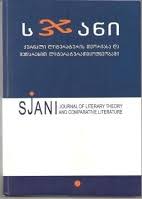„К чонгури“ Николоза Бараташвили: ритм подлинника и трех переводов
“To Chonguri” by N. Baratashvili: the Rhythm of the Original and of Three Translations
Author(s): Yordan LyutskanovSubject(s): Syntax, Semantics, Other Language Literature, Translation Studies, Theory of Literature
Published by: ლიტერატურის ინსტიტუტის გამომცემლობა
Keywords: Nikoloz Baratashvili; three-lined stanza in georgian poetry; poet‘s invocation of musical instrument; romanticism outside Europe; translation as [mode of] implicit literary studies;
Summary/Abstract: In this article I analyse semantic, syntactic, strophic and verse rhythm of a poem by Nikoloz Baratashvili (1817–1845), “To chonguri” (1837), and of three of its translations (to Russian – by Boris Pasternak and by Boris Brik, – and to Bulgarian – by Stoian Bakŭrdzhiev). As tool for the analysis of the original text, two literal translations are used (by Irine Modebadze, 2012, and mine, 2017). Analysis of the semantic and syntactic rhythm of the original leads to the following conclusion: while the text switches its focus from past to present to future, on the hind a coming-to-being and then an interiorisation of dialogue as an experience of the lyrical ‘I’ happens. Proceeding towards analysis of the strophic and verse rhythm, I put forth the question of Baratashvili’s poem’s hypothetic precedents: thematic (a poet addressing his musical instrument) as well as strophic (three tri-verse stanzas). I discuss commonalities and differences between “To chonguri” and the following forms: terzina (minding both hypothetic paths of its Georgian reception – via Russian and via Polish mediation), Spenserian stanza, some specimens of Mikhail Lermontov’s lyric and of Anacreontic lyric, Sapphic stanza, psalms, and of particular works in Georgian language from the 18th and early 19th c. displaying close similarity to “To chonguri” at least in their strophic structure. Considering both thematic and strophic levels allows indicating two works of poetry – hopefully known to me and to Baratashvili at the same time – as closest to Baratashvili’s: Horatius’ ode I, 32 and Psalm 136 (137 acc. to the Masoretic numbering). Considering the level of poetic line, “To chonguri” can be viewed as an exact structural equivalent of the form called, with regard to syllabotonic systems of versification, “logaeds” (heterometric ‘prose-poetic’ lines). Considering all three levels – thematic, strophic, and of poetic line (lines are structured as symmetric – 5/5 – decasyllables, combined on strophic level with pentadecasyllables, all shaped as dactyl-trochaic logaeds), – another piece of poetry appears closest to “To chonguri”: “Mastam [Intoxication] about [gown’s] rustle, to be pronounced for [during] the dance mukhaliph” by Giorgi Tumanishvili (1774–1837).
Journal: სჯანი
- Issue Year: 2019
- Issue No: 20/2
- Page Range: 210-245
- Page Count: 36
- Language: Russian

